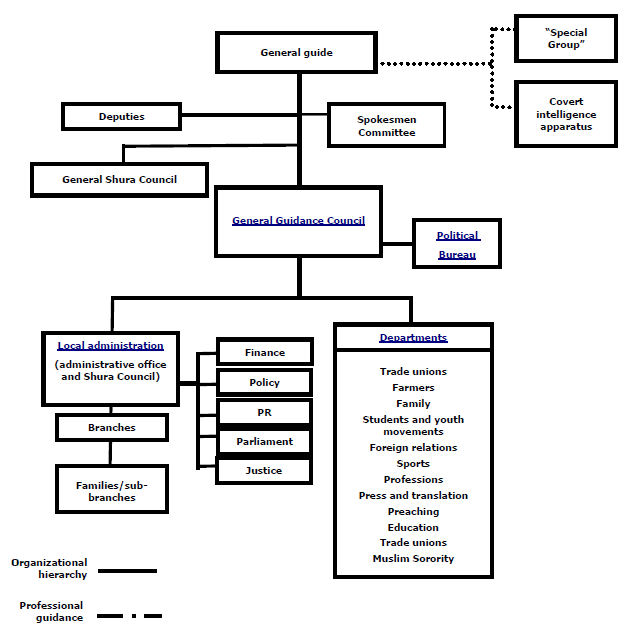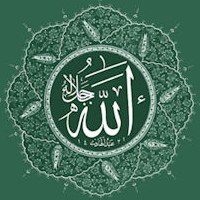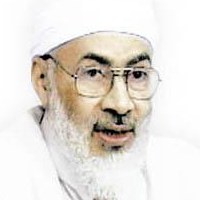![]()
Sun, June 19, 2011 | The Meir Amit Intelligence and Terrorism Information Center
The Muslim Brotherhood – Chapter 4: The structure and funding sources of the Muslim Brotherhood
The Muslim Brotherhood is an Islamic mass movement whose worldview is based on the belief that “Islam is the solution” and on the stated aim of establishing a world order (a caliphate) based on Islamic religious law (Shariah) on the ruins of Western liberalism. With extensive support networks in Arab countries and, to a lesser extent, in the West, the movement views the recent events in Egypt as a historic opportunity. It strives to take advantage of the democratic process for gradual, non-violent progress towards the establishment of political dominance and the eventual assumption of power in Egypt and other Middle Eastern countries.
Structure and organization
The Muslim Brotherhood has been outlawed in Egypt since the 1950s. Consequently, it has created an organizational structure designed to be as resilient as possible to suppression from the regime. This is achieved, on one hand, by decentralizing its activity and, on the other, becoming state-like in organizational behavior, through local and nation-wide networks. The movement is composed of a central administrative body (legislative branch, executive branch, and judiciary/arbitrating branch) based in Cairo, and local networks.
While the movement’s popularity with the Egyptian public is beyond question, it is rather difficult to provide figures about the support it enjoys or locate data on the extent of its socio-economic activity. This is mainly because the movement’s members keep their membership a secret due to the regime’s threats. The number of supporters is estimated between hundreds of thousands and several millions.[36] Another assessment, based on voter turnout and the electoral achievements of the Muslim Brotherhood, puts the support rate for the Muslim Brotherhood at 20-30% of the Egyptian public. Some believe, however, that the numbers are much lower.
The Muslim Brotherhood’s organizational infrastructure is based on a bottomup design:[37]
a. The basic level is the “family” (usra), a framework established in the first several decades of the movement’s existence. It is a cell that first included five, and then a larger number of activists sharing a close relationship with each other. This cell represents the broadest spectrum of members on various levels of organizational affiliation. Each “family” chooses a leader (naqib) to represent it on the administrative council of the local Muslim Brotherhood branch. Each family member is required to lead an Islamic lifestyle; bond with other Muslims; take part in weekly meetings and other activities; pray, fast, and study the Quran with fellow members of the movement; and donate a portion of his income to the “solidarity fund”, used to assist members in need and, in part, transferred to the general welfare budget of the Muslim Brotherhood headquarters. This network of cells has proven itself to be a highly effective training and bonding system for the movement’s activists.
b. The activity of the “families” is monitored by a regional administration.[38] In its appointed sector, it operates as an independent body both socially (helping people in need, local activity in mosques, classes) and politically. The activity of the regional administrations is directed by the professional departments, subjected to the General Guidance Office.
c. On the national level, the structure of the Muslim Brotherhood has remained essentially identical to the initial scheme formed in the 1930s and 1940s. The movement’s organizational structure was reformed in the 1980s. The reform focused mainly on a partial departure from the centralized character and providing more decision-making freedom to province-level leaders. This was reflected in the expansion of the various committees and departments and the development of the movement’s local authorities.
Currently, the following bodies may be said to constitute the movement’s national level:
a. The general guide (al-murshid al-‘aam)—the title held by the leader of the Muslim Brotherhood, the person who shapes the movement’s policy and activity pattern. The general guide is also the chairman of the Guidance Office and the movement’s Shura Council. Members of the movement are expected to fully obey his decisions, and all Muslim Brotherhood departments are subject to his authority. In practice, this changes in accordance with the general guide’s personality, power, and status in the movement’s leadership. Traditionally, the general guide in Egypt also serves as the head of the international Muslim Brotherhood movement.
Formally, the general guide’s election procedure is well-established; however, it is in fact flexible and open to interpretation.[39]
a. The general guide is formally elected by the movement’s Shura Council from the candidates presented by the Guidance Office.[40] Usually, the candidate is a member of the Guidance Office, even though this is not required by the regulations (it is enough for the candidate to be a member of the Shura Council). In Muslim Brotherhood tradition, the new general guide is the oldest physically- and socially-functioning member of the Shura Council perceived to be as a worthy candidate.
b. If the Shura Council is unable to convene for any reason,[41] its authorities (including the election of the general guide) are transferred to the Guidance Office.
c. Being also the leader of the global Muslim Brotherhood movement, the candidate must be known and respected by Muslim Brotherhood circles outside of Egypt, and secure the agreement of the Supreme Shura Council (the Shura Council of the international Muslim Brotherhood movement).
In 2010, it was decided that the general guide can serve up to two six-year terms[42] (most general guides in the past[43] were elected for life). Also appointed are one or more deputies and a spokesman.[44] The current holder of the title of general guide is Mohammed Badie (elected in January 2010).
a. The General Guidance Office is the movement’s highest leadership and administration body, formulating and executing its national policy (which includes direction and monitoring of preaching activities and the operation of its departments) and its international relations. According to the movement’s regulations:
1) The office consists of 16 members, most of them Egyptians[45] and the rest delegates who represent the movement in other Arab countries.[46] Members of the Guidance Office are elected by secret ballot by the movement’s Shura Council.[47]
2) The elections for Guidance Office are held once every four years. Elected members can serve up to two terms (i.e., eight years) and appointed members can only serve one term, which always ends when the Guidance Office elected members’ term ends.
3) The office meets periodically (it is headquartered in Cairo). The meetings are overseen by the general guide or by his deputy or the longest-standing member of the office, when the general guide is not available.
4) Four General Guidance Office members are also members of the Permanent Committee (al-hay’a al-da’ima) that makes decisions in emergencies or on relatively minor routine matters.
b. The General Guide’s Headquarters and the Guidance Office:
1) The Political Bureau/Political Department — the movement’s executive wing, directly under the Guidance Office.
2) Departments — the general guide and the Guidance Office are in charge of a number of departments equivalent to government ministries and responsible for specific issues. Through these apparatuses, the movement maintains constant work relations with the various associations in the regional administrations (charitable and welfare societies, trade unions, and students associations).
c. The General Shura Council — according to the regulations, the council is equivalent to a legislative branch, takes part in the formulation of the movement’s overall policy (for instance, it is supposed to approve the overall policy and discuss annual reports submitted by the Guidance Office) and is involved in various logistical and administrative issues. In practice, the General Shura Council has been unable to meet properly and regularly since 1995, and appears to have become a fictitious institute used as a rubber stamp to approve decisions made by the Guidance Office. According to the formal regulations, the authorities and main roles of the Shura Council are:
1) The council consists of 75-90 members elected by secret ballot from the regional Shura councils. The Guidance Office can appoint up to 15 additional members.
2) The Shura Council members’ term lasts four years. In case that the Shura Council elections cannot be completed at the slated date, the existing council will continue serving until a new council is elected.
3) The Shura Council is supposed to convene twice a year (once every six months) at the request of the general guide. If needed, the general guide may convene it for an emergency meeting. The Guidance Office decides on the location (which is supposed to be in Cairo) and agenda of the session. A valid quorum for a council meeting is half of its members, and its decisions require majority vote of present members for approval.
4) The council’s monitoring of the Guidance Office — according to the regulations, the Guidance Office is required to present the Shura Council with a comprehensive report on its activity and the movement’s da’wah activity for the previous year, and present its policy and work plan for the coming year. The Guidance Office is supposed to implement the decisions approved by the Shura Council.
d. If extraordinary circumstances prevent the Shura Council from convening, the Guidance Office will assume all its powers. In our understanding, this has been the case since 1995.
The movement’s judiciary branch, established by the Egyptian Muslim Brotherhood this past year, consists of a legal counselor and courts,[48] which apparently operate on a regional basis. It seems that this system is also overseen by the general guide, since court decisions are referred to his approval. In addition, the general guide appoints the judges.
The national-level structure of the movement is duplicated on the regional level. Thus, each region or group of regions has an administrative office (equivalent to the Guidance Office) and a regional Shura Council. Their relationship parallels that which exists between the national-level bodies. The General Guidance Office monitors and directs these bodies and may intervene to change their conduct or human composition. Through these bodies, the movement operates a network of services for the public and remains in constant contact with the people.[49]
Covert networks
In the early days of the movement, Hassan al-Banna introduced a covert component into its structure. Its most prominent expression is the “secret apparatus”, which in the 1940s operated against the British presence on Egyptian territory and was involved in assassinations of regime officials. Some of its activists even fought alongside the Arab forces in 1948. The radical elements have left the movement over the years; however, covert bodies may exist even now, such as a covert intelligence apparatus that gathers information on the members and institutions of the movement and other external power elements, and a “special” military-oriented group. To the best of our current knowledge, the Muslim Brotherhood currently does not have a terrorist wing.
The movement’s regulations is a dynamic document that undergoes periodical developments and reflects the changes undergone by the movement over the years. It was apparently written in the first years of the movement’s existence (1930-1931), was revised, and finally approved in 1945. New regulations approved under the second general guide, Hassan al-Hudaybi (1952-1977) included a clause allowing for the revision and amendment of the regulations. The regulations were next changed in 1982 to accommodate the movement’s expanding activity. The regulations defined the general guide, the Guidance Office, and the General Shura Council as the main administrative bodies of the movement. The regulations were also amended in 1990 to limit the general guide’s term to six years.
The latest amendment (apparently in December 2009), based mostly on the 1990 text of the regulations, limits the number of terms members of the Guidance Office can serve, preserves the positions of its detained members, and introduces changes in their election process. In general, it appears that the changes of the movement’s regulations include the strengthening of the hierarchical and centralized axis with regard to decisionmaking on issues of the movement’s structure and strategy, and giving more weight to the general guide and the Guidance Office at the expense of the Shura Council, while providing the “ground levels” with considerable leeway for operation.
The structure of the Muslim Brotherhood in Egypt
The international Muslim Brotherhood organization
The international Muslim Brotherhood movement, which constitutes an umbrella organization for Muslim Brotherhood branches around the globe, was established in 1982 under the leadership of the Egyptian movement. The movement apparently includes the Global Guidance Office and the Global Shura Council.[50] The international Muslim Brotherhood convenes occasionally and serves as a framework of consultation between the various Muslim Brotherhood branches in the world.
The movement’s regulations[51] formally define three circles of association between the Muslim Brotherhood branches and the leadership of the international Muslim Brotherhood, which is mostly the Egyptian leadership:
a. The first circle — Muslim Brotherhood leaders in the various countries are required to follow the decisions made by the movement’s general leadership (the general guide, the Guidance Office, and the Shura Council) on membership conditions and general policy. In addition, they must secure the approval of the General Guidance Office before making important political decisions.
b. The second circle — Muslim Brotherhood leaders in the various countries are required to consult and reach an agreement with the general guide or the Guidance Office before making decisions on local issues that may affect the Muslim Brotherhood in other countries.
c. The third circle — the leeway for independent action[52] of Muslim Brotherhood leaderships in other countries includes the local movement’s action plan, policy, and activity, organizational development, and positions on local affairs that have no bearing on the Muslim Brotherhood in other countries, provided they do not conflict with the movement’s overall strategy. Such issues must be reported to the general guide or the Guidance Office as soon as possible or in the annual report of the general supervisor (the title held by Muslim Brotherhood leaders outside of Egypt).
d. Additionally, Muslim Brotherhood leaders in the various countries must share the burden of spreading the movement’s principles, and each national branch is required to pay a specified annual amount to the general Muslim Brotherhood. The exact amount is jointly determined with the Guidance Office.
The Muslim Brotherhood’s funding sources
The extent of the Muslim Brotherhood’s economic activity and funding sources is uncertain. The financial system is considered one of the movement’s most closelyguarded secrets, directly managed by the general guide, his deputies, and the secretary general by virtue of being its major source of power. The movement’s leaders claim that there is no central economic body responsible for funding its activities. In their view, all funds come directly from the pockets of its members; accordingly, each administrative office is charged with independently managing economic activity in its respective sector.
However, our information suggests that the extensive financial network is based on private donors outside of Egypt (mainly from Persian Gulf states and the West), including well-organized foundations; funds collected from the movement’s activists, mainly the wealthy ones; “charity funds” (zakat) collected in mosques and during public conferences organized by the movement (such as Ramadan fastbreaking meals and conferences on the Palestinian issue); and profits from investments made by the movement and its members in various companies and enterprises in Egypt and elsewhere.
The Muslim Brotherhood apparently has extensive connections with Islamic banks and financial institutions,[53] on which it relies, so it seems, to manage its routine financial activities. It is also likely that the movement’s financial system is nourished by regular budgets transferred by the Egyptian regime to legal charitable societies strongly controlled by Muslim Brotherhood members.
On April 24, 2010, the Al-Masri al-Youm newspaper reported that a criminal lawsuit was filed against five Muslim Brotherhood leaders for transferring millions of dollars from abroad into Egypt to fund the movement’s activity. The funds had been transferred through economic institutions in Egypt owned by Muslim Brotherhood activists. One of them is detained in Egypt, and the others were tried in absentia.
One of the suspects, Ibrahim Munir Ahmed Mustafa,[54] was accused of exploiting the Israeli Operation Cast Lead to collect donations for the movement, claiming the funds would go towards helping the “Palestinian people”. The other suspects are also accused of involvement in fundraising and laundering money transferred to the movement and supposedly raised for the Palestinian people. Another suspect, Wagdi Ghanem, was said to be involved in raising funds at a conference held by an organization known as the Palestinian Forum in Britain.
One of the British institutions reported by the newspaper Al-Masri Al-Youm to have been involved in transferring the funds to Egypt is Dar al-Ri’aya (Muslim Welfare House), an institute belonging to the Muslim Brotherhood in Britain. On January 8, 2011, the Al-Ahram newspaper reported that the criminal court in Giza had reopened the affair.
This comprehensive analysis of the Muslim Brotherhood (by ITIC) consists of 12 chapters. All 12 chapters are listed below:
Chapter 1: The historical evolution of the Muslim Brotherhood in Egypt
Chapter 2: The ideology of the Muslim Brotherhood
Chapter 3: The Muslim Brotherhood’s education, preaching, and social activity
Chapter 4: The structure and funding sources of the Muslim Brotherhood
Chapter 6: The Muslim Brotherhood’s stance on the Palestinian-Israeli conflict
Chapter 7: The development of political discourse in the Muslim Brotherhood and the 2007 election platform
Chapter 8: Profiles of prominent Muslim Brotherhood figures in Egypt
Chapter 9: The Egyptian Muslim Brotherhood’s ties to its branches in Middle Eastern and Western countries
Chapter 10: The Muslim Brotherhood in other Arab countries and in Europe
Chapter 11: A profile of Sheikh Dr. Yusuf al-Qaradawi
Chapter 12: Islamic jihadist organizations in Egypt ideologically originating in the Muslim Brotherhood
You can download the full study in PDF-format here
Notes:
[36] This results from the various methods used to count votes. The count frequently includes the wife and children of the member/supporter. The movement’s achievements in elections for the People’s Assembly cannot be taken as indicative of its support — not only are the voting figures unreliable, but in many cases voting for Muslim Brotherhood members can be motivated by vicinity, family ties, personal friendship, and/or dissatisfaction with the regime rather than sympathy with the movement’s ideology.
[37] This part is based on three fundamental documents: the movement’s up-to-date regulations, published in December 2009; the regulations of the global Muslim Brotherhood movement as published on its official Englishlanguage website (www.ikhwanweb.net), and the movement’s internal documents exposed by the regime following the Salsabil affair in 1992. Additional sources were used in some cases.
[38] At least in the early days of the movement, there were additional levels between the “family” and the regional administration: every four families were a “tribe” (‘ashira), every five tribes were a “group” (rahat), and every five groups were a “battalion” (katiba). It is not unlikely that similar divisions between the two levels exist to this day.
[39] It appears that there is no permanent process/procedure for the election of the general guide, and that it changes according to the personality of the candidate, political and security circumstances, and the balance of power within the movement. For example, after the death of the second general guide, Hassan al-Hudaybi (1972), his successor, Umar al-Tilmisani, was elected on grounds of being the longest-standing, oldest member, foregoing the process of elections in the Shura Council. The election of the general guides who followed — Muhammad Hamid Abu al-Nasr (1986-1996), Mustafa Mashhur (1996-2002), and Ma’mun al-Hudaybi (2002-2004) — was not based on age or standing, instead being a product of internal circumstances and manipulations within the movement. In the case of Mustafa Mashhur and Ma’mun al-Hudaybi, the movement introduced the custom of a public pledge of allegiance to the worthiest candidate for general guide at the burial ceremony of the previous general guide.
[40] In this context, the general guide is elected by direct, secret ballot, and the winner is the candidate who obtains more than 50 percent of the votes. If no candidate has the required percentage of the votes, another round is held and the candidate with the most votes is elected. In practice, it appears that the election takes place by a majority consensus, perhaps even without voting (due to the occasional difficulties in voting caused by the arrests of some of the movement’s leaders).
[41] It appears that the Shura Council has not convened regularly since 1995, when all of its members were arrested during one of its meetings.
[42] The clause concerning the reelection of the general guide and the definition of the term’s length was introduced into the movement’s regulations in 1992, but it did not put a limit on the number of terms.
[43] The exceptions are the appointment of a temporary general guide (in 1949-1951); a short period of time in early 2004, after the death of general guide Ma’mun al-Hudaybi until the appointment of Mahdi Akef as his successor — usually on the backdrop of a crisis and/or differences of opinion within the movement about the general guide’s successor; and the stepping down of Mahdi Akef after his first term as general guide — a precedent-setting incident in the movement’s history.
[44] The up-to-date regulations require each geographic region to have at least one representative in the Guidance Office. Muslim Brotherhood documents exposed in the Salsabil affair (1992) contain a clearer division of representatives by geographic regions, and it is unclear whether it is still valid (at least as a custom): nine members of the Guidance Office are from Cairo (provided they permanently reside there) and are to address matters pertaining to the movement’s departments, organization, and activity; one representative from the provinces of Alexandria and Marsa Matruh, two representatives from Upper Egypt, and two representatives from the Egyptian diaspora abroad.
[45] The regulations published on the movement’s official English-language website (www.ikhwanweb.com) require that the Guidance Office include representatives from the movement’s branches in other countries. This issue is not mentioned in the up-to-date regulations (December 2009).
[46] For now, members of the Guidance Office must also be members of the movement’s General Shura Council. In December 2009, former deputy general guide Muhammad Habib brought up an idea to amend the regulations so that a member of the Guidance Council is not required to be a member of the General Shura Council, with the intent of separating the movement’s legislative branch (the Shura Council) and the executive branch (the Guidance Office). The idea, however, did not gain popularity.
[47] Limiting the number of terms Guidance Office members can serve is one of the recent changes introduced in the movement’s regulations. The amendment stemmed from the demands of the movement’s younger generation for more considerable representation in its key roles. On the other hand, it has been decided that a person is considered a member of the Guidance Office even if his term is over, as mentioned above, until the Shura Council convenes to elect the new Guidance Office members. This is a result of the difficulties in convening the movement’s Shura Council due to the security and political limitations imposed on it. Another amendment of the regulations rules that a person shall remain a member of the Guidance Office even if he is arrested.
[48] The judiciary was apparently established with the assistance of representatives from the movement’s pragmatic faction. It has been reported that the Jordanian Muslim Brotherhood has courts where its members are tried. It is likely that the equivalent system in Egypt may operate in a similar fashion.
[49] In fact, the Muslim Brotherhood’s organizational structure is similar to that of communist and fascist movements that operated in the 1930s. There is some evidence to indicate that the founder of the movement, Hassan al-Banna himself, was influenced by and deeply impressed with the militarist youth movements established in fascist Italy and Nazi Germany. Thus, in the first several decades of the movement’s existence, Al-Banna established the Muslim Brotherhood’s scout movement, whose graduates were later integrated into a system of “battalions”. In addition to religious training, members underwent routine physical training in summer camps and other gatherings of the movement. In the 1940s, some were integrated into the movement’s military wing, “the secret apparatus”.
[50] The structure and method of operation of the international Muslim Brotherhood movement is unascertained. According to an interview given by former general guide Mahdi Akef to Al-Quds al-Arabi in April 2004, the Global Guidance Office consists of 80 Egyptian and five non-Egyptian members, while the Global Shura Council consists of 90 Egyptian and 40 non-Egyptian members.
[51] Also exposed in the Salsabil affair (1992).
[52] This is motivated by the movement’s understanding that each branch exists in different conditions and is subject to a system of considerations and opportunities unique to its country.
[53] Such institutions proliferated in Egypt during the 1980s; however, later in the same decade the regime was able to eliminate the system of Islamic investment companies working with the Muslim Brotherhood. The latest major financial institution exposed as funding Muslim Brotherhood activities was Al-Taqwa Bank, directed by Muslim Brotherhood member Youssef Nada. Incorporated in the Bahamas in 1988, it was shut down in 2000 for financial felonies.
[54] Ibrahim Munir, a London resident, is a member of the Muslim Brotherhood Guidance Office, chairman of the international Muslim Brotherhood organization, and the movement’s spokesman in the West. He supervises the Muslim Brotherhood mouthpiece Risalat al-Ikhwan, published in London.



 RSS
RSS











The structure and funding sources of the Muslim Brotherhood | #Egypt #Islamism http://bit.ly/nGv7Oq
The structure and funding sources of the Muslim Brotherhood | #Egypt #Islamism http://bit.ly/nGv7Oq
@Bazramit @DioscorusBoles @ehabmes an article about #MB funding http://t.co/6zvYveZR
@Bazramit @DioscorusBoles @ehabmes an article about #MB funding http://t.co/6zvYveZR
@kalnaga Some articles regarding MB funding http://t.co/TBj7u9hG http://t.co/6zvYveZR